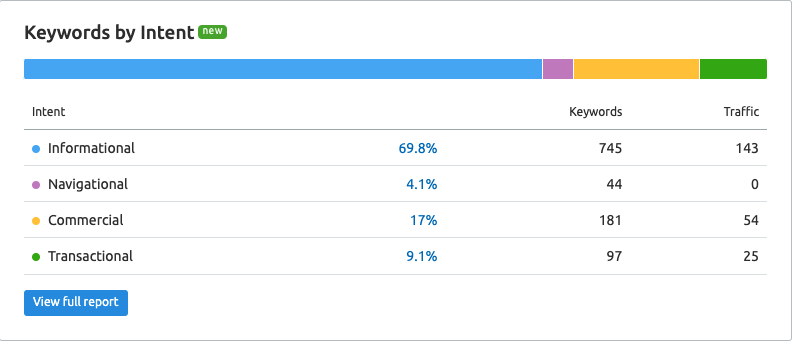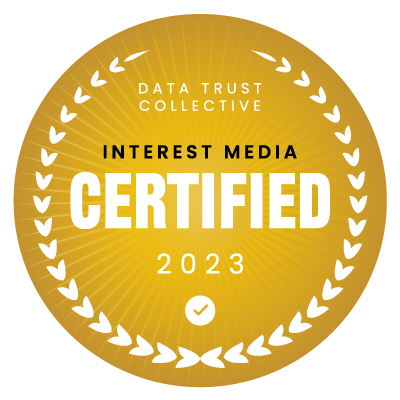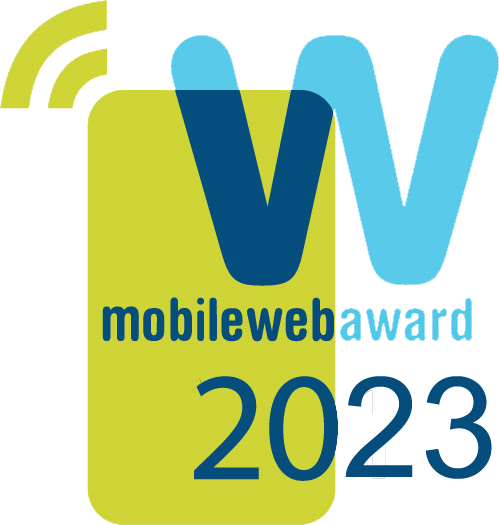
The Best Methods for Understanding and Leveraging Your Customers’ Intent
- Unlock the 8 core methods for uncovering and understanding your customers’ intent.
- Discover the 4 types of customer intent in web searches that can be found in every demographic and customer journey.
- Learn how to leverage customer intent to convert more prospects into buyers.
The Keys to Understanding and Leveraging Customer Intent
Understanding your customers’ intent is like unlocking a treasure chest of insights that can guide your business to greater success. It’s about grasping what your customers are looking for, what motivates them, and how they behave. Getting to the heart of your customers’ intent requires a multi-pronged approach. While demographics, creating customer personas and journeys will provide some insight toward understanding customer intent – there’s a lot more information you need.
There are many things you should try to ask your customers directly. After all, that eliminates the guesswork.
You also need an understanding of what your customers do away from your site and with your competitors, which will also provide valuable information.
In this article, we will unlock the four secrets of customer intent, and then show you eight core methods for discovering, understanding, and leveraging your customers’ intent.
How customer intent relates to customer and buyer journeys
Customer intent can be found in every demographic and customer or buyer journey. To briefly recap, a customer journey is a term used to describe the interactions a customer has with a product or business, (brand or service) as they look for a solution to a particular problem and make a purchase decision.
Customer Journey or Buyer Journey?
Further, a customer journey could also be differentiated from a “buyer journey.” This refers to a customer that acknowledges a certain problem, then goes through the process of considering, evaluating, and deciding on a purchase of a product or service.
Conversely, a customer journey will have further touch points by the company or brand such as pre-purchase, sales process, after-sale follow-up, and could have renewals or add-on sales.
Stages of the Customer Journey
Different schools of marketing may give these five stages slightly different names, but most agree the customer journey has five stages:
Stage 1: Awareness (of the problem): The customer is aware they have a problem they need to solve.
Stage 2: Consideration: The customer is evaluating and considering their options between various solutions to their problem.
Stage 3: Decision or purchase: The customer makes a decision and chooses a solution by purchasing the product or service.
Stage 4: Retention or loyalty: The customer is satisfied with their decision and purchases again.
Stage 5: Advocacy: The customer recommends the product or service to others.
Intent-Based Marketing and the Buyer Journey
In intent-based marketing, the focus is on stage 3 of the buyer journey. Meaning, intent-based marketing targets customers who are in the decision stage and ready to make a purchase.
It is important to note that to make your intent-based marketing most effective, you need a full understanding of your different buyers and how they got to the decision/purchase stage. You need to know what your customer is already aware of and what they have considered that has brought them to the decision stage.
For example, your customer may be considering your product and service against one of your competitors. You need to understand the strong points of your competitor that may be appealing to this prospect so that you can effectively counter why your solution is superior. We will look at this further when we discussed the 8 methods below.
The 4 types of customer intent by search
No matter the demographic, or stage of the customer or buyer journey – customer intent in web searches can be simplified into four core groups: Navigational intent, informational intent, transactional intent, and commercial intent.
We can summarize these four groups as follows:
- Navigational Intent: Customers searching a webpage or website for a specific brand, topic, or product.
- Informational Intent: Customers are searching for information on a specific topic or to answer a specific question.
- Commercial Intent: Customers researching a specific product or service.
- Transactional Intent: Customers looking to purchase a specific product or service.
In intent-based marketing, we are only concerned with this last category of “transactional intent.” We are only targeting customers who are ready to make a decision and purchase a product or service.
As the following graphic shows, 69.8% of keywords based on intent are informational, while those we are most concerned with in intent-based marketing – transactional keywords – represent 9.1% of all keywords by intent, according to SEMRush.
8 Methods for Discovering and Understanding Your Customers’ Intent
Here are 8 of the best methods to get deep inside the minds and motivations of your customers. Some of these methods are simple, others will take effort. All are highly worthwhile.
1. Surveys and Questionnaires
Sometimes, the most straightforward way to understand what your customers want is simply to ask them. Surveys and questionnaires allow you to gather specific information about customer preferences, needs, and expectations. Make sure to include open-ended questions that give customers room to express themselves, as this can offer more nuanced insights than yes/no questions or multiple-choice that have preconfigured answers.
2. Analyzing Customer Behavior
This involves studying how customers interact with your website, product, or service. Tools like Google Analytics or specialized CRM software can track what pages they visit, what they click on, how long they stay, and even what they abandon. Data analytics provides valuable clues to their intent and interests.
3. Social Media Monitoring
Social media is a goldmine of information. Customers often freely express their opinions, preferences, and experiences on these platforms. Monitoring and participating in these conversations can give you a direct understanding of customer intent and help you identify trends. Check out our tips on how to engage your audience on social media.
4. Customer Reviews and Feedback
Encourage and analyze customer reviews and feedback on various platforms. Whether positive or negative, these reviews can offer deep insights into what customers value, desire, and expect.
5. Creating Customer Personas
the time-tested method of developing detailed customer personas by synthesizing all the information you’ve gathered remains valuable. Think of these personas as fictional characters (based on real customer actions) that represent different segments of your customer base, encompassing their demographics, interests, behaviors, and pain points. Personas can help your team align on who exactly they are serving and why.
6. Conducting Focus Groups and One-on-One Interviews
Sometimes, a more personal touch is needed to dig deeper. Focus groups and one-on-one interviews allow for a more nuanced conversation and can reveal subtleties in customer intent that might not surface in a survey.
7. Utilize AI and Machine Learning Tools
Some businesses may benefit from artificial intelligence and machine learning tools that can analyze vast amounts of data quickly and spot trends, patterns, and anomalies. This is a powerful method for uncovering insights into customer intent that might be missed through manual analysis.
8. Competitor Analysis
Understanding what your competitors are offering and how they are perceived in the market can also illuminate what your customers might be seeking.
Are your potential or current customers purchasing from your competitors? If a competitor is satisfying a particular customer need that you are not, this could be a key to unlocking new understanding.
By applying these methods, you can build a more customer-centric approach, offering products and services that resonate with your target audience. After all, knowing your customers’ intent is like having a roadmap to their hearts, guiding you toward decisions that meet their needs and exceed their expectations. It’s not just good business; it’s a relationship-builder!
Related Articles:
- Baymard: Cart Abandonment Rate Statistics 2023
- Interest Media: Understanding Data Analytics in Digital Publishing
- SEMRush: Analyze Keyword Intent Instantly
- Interest Media: Unlock Secrets with Intent-Based Marketing
- Interest Media: Interactive Social Media Posts To Engage Your Audience
- Dot Digital: Global Benchmark Report
Leveraging Your Understanding of Customer Intent
Let’s look at three ways you can leverage what you understand about your customers’ intent.
Customer engagement: lead scoring and lead grading
By using intelligent applications, you can rate and qualify leads based on their actions and engagements on your site or with your marketing campaigns, through the process of lead scoring or lead grading.
Lead scoring is the process of automatically assigning a numerical value to inbound leads by associating their actions with a number you deem to be the most valuable. For example, visiting the pricing page, requesting a product demo, etc. You may assign a higher value to a prospect visiting a pricing page versus an informational page.
Lead grading is the process of assigning a letter grade (A-F) based on several factors and/or actions that you deem valuable.
Targeting repeat page hits
As part of your intent-based marketing efforts, you should have an understanding of what pages on your website that are most visited by those with buyer’s intent.
Using intelligence and/or automation programs, you can trigger an action when a browser views the same page a specified number of times. This action might be an email or a push notification giving that prospect vital information, inviting them to contact you, or offering a discount. Whatever would be most appropriate to nudge them into making the purchase.
Triggering based on customer journeys
Even though intent-based marketing is focused on targeting customers who are in the decision/purchase stage, you do want to track those customers who may backtrack. You can use intelligent tools to identify when customers take specific actions along the customer or buyer journey, such as falling back from the decision stage into the consideration stage, or when their activity decreases.
For example, if a customer moves from the decision stage to the consideration stage, track what kind of content they are looking at to aid and nurture them to get over this stumbling block and move them back to the decision stage.
For customers who have become inactive, automation can be leveraged with the data you already have on them to deliver a personalized campaign.
Targeting cart abandonment
“79.53% of shopping carts in were abandoned in 2023″– according to statistics captured by Baymard
Understanding why your customers are abandoning their carts and reversing that action could have a huge impact on your financial bottom line.
“Acting quickly recovered 45% of abandoned carts within 2 hours,” –Dot Digital global benchmark report
The key is not only re-engaging with your customers quickly but also having insight into why they abandoned their cart. Intelligence and/or automation can browse abandon carts and re-target those prospects. This can be done with email marketing, text messages, or push notifications.
The most common reasons people abandon shopping carts according to a report by Zippia, the top 7 reasons shoppers abandoned carts are:
- Extra costs too high: 49%
- Having to create a new user account: 24%
- Delivery to slow: 19%
- Complicated checkout process: 18%
- Concerns about payment security: 17%
- Couldn’t see order total upfront: 17%
- Website errors/crashes: 12%
Key Takeaways
- Intent-based marketing focuses on buyers who are in the “decision/purchase” stage of the customer journey.
- There are 4 types of customer intent and web or website searches: Navigational, informational, commercial, and transactional. The main focus of intent-based marketers is customers who are looking for and have shown intent toward purchasing a specific type of product or service.
- There are 8 methods you can use to discover and understand the intent of your customers: Surveys and questionnaires; analyzing customer behavior; social media monitoring; customer reviews and feedback; creating customer personas; conducting focus groups and one-on-one interviews; utilizing AI and machine learning tools; conducting competitor analysis.
- To leverage what you discover about the intent of your customers you can use intelligent applications and methods such as lead scoring, lead grading, targeting repeat page hits, triggering based on movements within customer journeys, and targeting cart abandonment.
- In summary, it is important to discover the pain points of your customers, where they look for answers, what web and social media sites they visit, their knowledge about the available solutions, what they like and dislike about your products or company, what they like and dislike about your competitors, the reservations and stumbling blocks that are preventing them from purchasing your product or services. Coalesce all this information to build profiles/personas of your customers and messages to improve your marketing efforts.
Interested in Learning More?
Check out our Free White Paper on The Unbeatable Nature of Intent-Based Advertising or reach out to one of our brand promotion specialists! We pride ourselves on being able to bring advertising partners the exact consumers they’ve been looking for.



![CART ABANDONMENT RATE STATISTICS [2023] - Zippia](https://interest-media.com/wp-content/uploads/2023/08/reasons-for-cart-abandonment-in-the-us.jpg)










